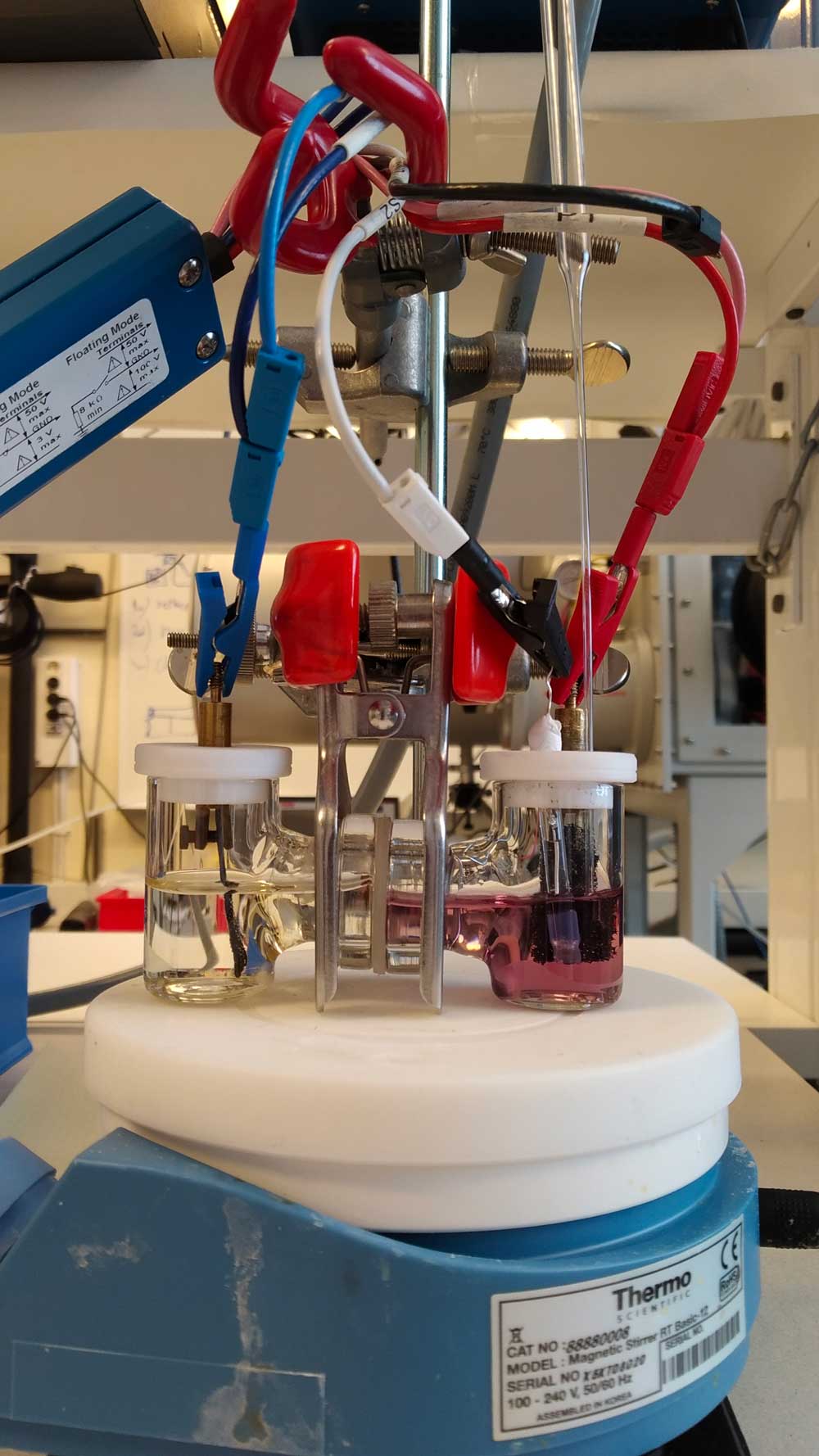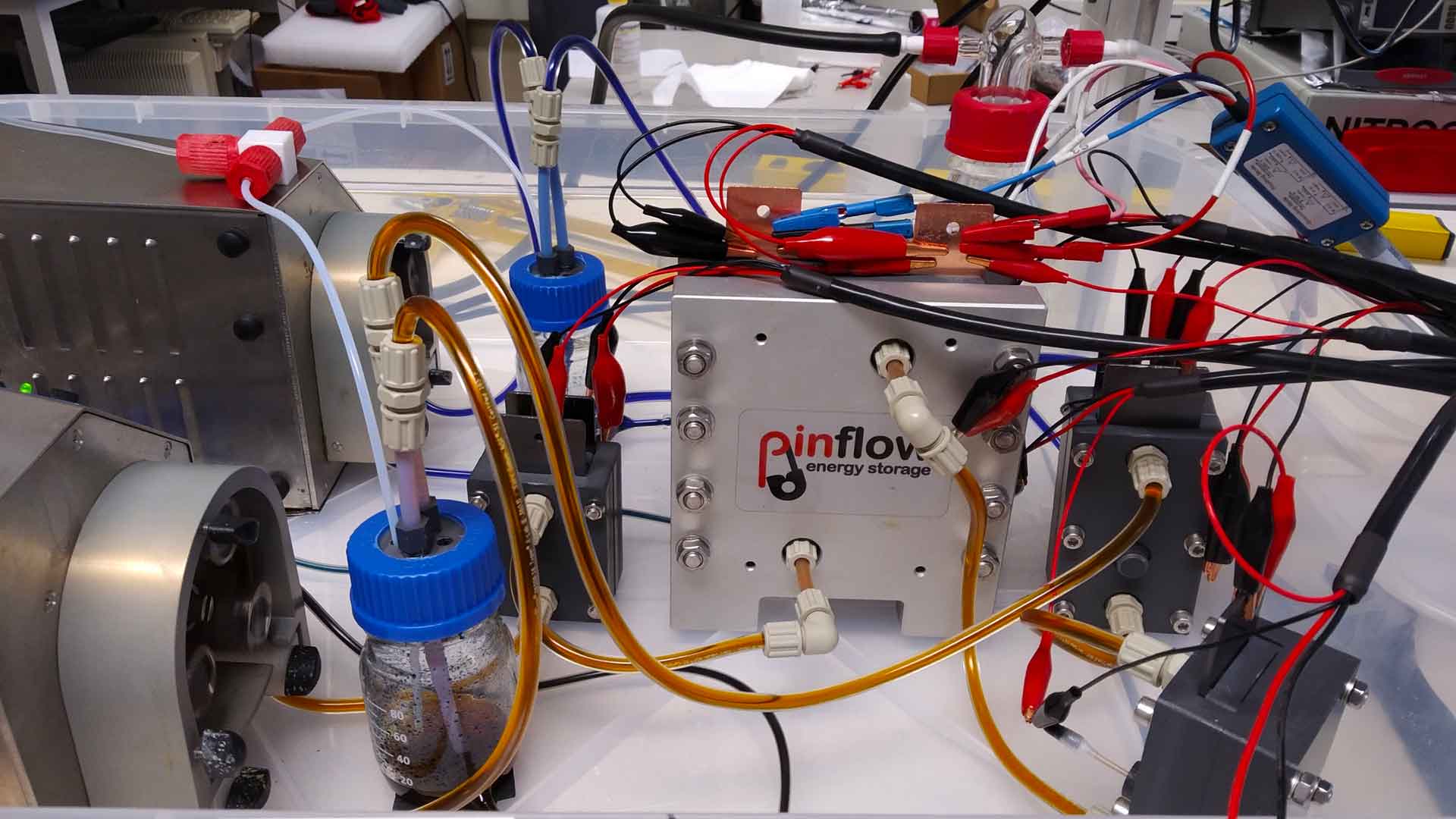Turku preliminary results
Focusing on the development of Aqueous Organic Redox Flow Batteries (AO-RFBs), the experimental electrochemistry is conducted at Turku University. The group leaded by Prof. Pekka Peljo is carrying out the electrochemical analyses of new synthetized organic molecules as well as running lab-scale batteries to provide the experimental data needed for model’s validation.
The testing of the new materials ranges from the standard electrochemical analysis to the proper testing in a lab-scale RFB. Organic molecules synthetized at University of Jyväskylä are tested in Turku, firstly with cyclic voltammetry. The most promising candidates are then analyzed in a cell to check the stability, an important factor when considering organic molecules for a RFB. The picture below shows an H-cell used to run a galvanostatic cycling of one of the synthetized pyridoxal-based molecules tested at Turku University.


The electrochemical results obtained coupled with complementary studies, as mass spectroscopy and NMR analysis, serve as feedback to design the next new candidates. Both Universities work in cooperation in order to define the next steps to improve the performance of the new organic materials in a flow battery.
Within the CompBat project, the performance of organic couples in a proper flow battery is also studied at University of Turku. The experimental set up used in this research includes additional in-situ potential measurements that allow a further analysis of the redox couples studied. This configuration provides information of the processes occurring in the battery allowing to monitor both electrolytes separately, determinate half-cells state of charge and predict possible imbalances in the system. The additional measurements are obtained using secondary cells in the system, as shown in the figure below.

So far, this system has been used to study the behavior of vanadium and other commercial organic couples. In the future, this experimental work will be extended to analyze the new synthesized materials. The results already obtained have been used to validate a zero-dimensional model for RFB simulation developed within the CompBat project with high fidelity.
